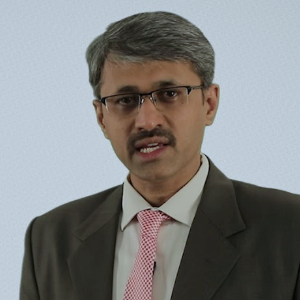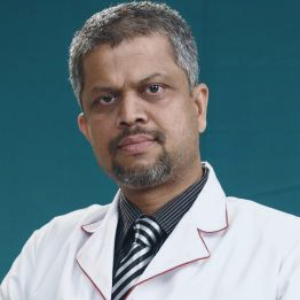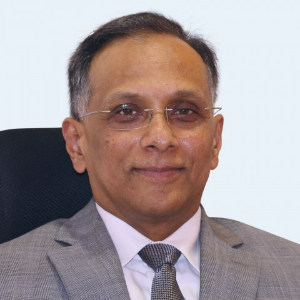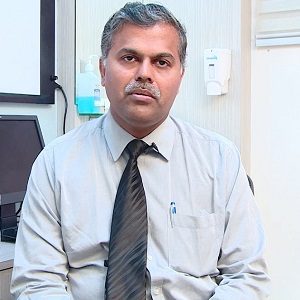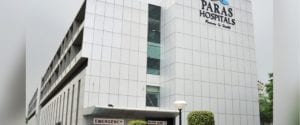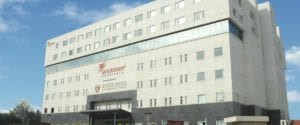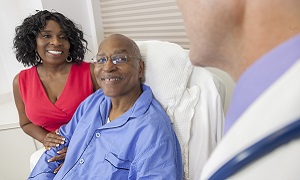Best VP Shunt Doctors in India
- Neurosurgeon & Spine Surgeon, Bengaluru, India
- Over 15 years’ experience
Profile Highlights:
- Dr. Praveen K S is a highly qualified neurosurgeon with over a decade of experience in handling all kinds of neurological diseases and disorders.
- He specializes in Pediatric Neurosurgery, Neuro-Oncology, Endoscopic neurosurgery, Aneurysms, and Neuro- Trauma and has performed over 4000 neurosurgeries in his career.
- Neurosurgeon & Spine Surgeon, Mumbai, India
- Over 20 years’ experience
Profile Highlights:
- Dr. Rahul Modgi is a highly established neuro and spine surgeon in Mumbai specializing in all types of brain and spine surgeries.
- Dr. Rahul Modgi’s name has been recorded in the Limca Book of Records in 2014 when he removed the heaviest iron rod from the brain of a 17-year-old patient. He has also performed various other risky surgeries for which he has greatly appreciated.
- Neurosurgeon, Bengaluru, India
- Over 30 years’ experience
Profile Highlights:
- Dr. Rajakumar V Deshpande is a renowned Neurosurgeon in Bengaluru. He performed the first pedicle screw fixation surgery for a spine injury in Bangalore.
- Dr. D V Rajakumar specializes in endoscopic neurosurgeries and has performed some of the most complex brain and spine surgeries through the endoscopic approach. His other areas of interest include minimally invasive neuro surgeries, management of cerebrovascular diseases, and brain tumor surgeries.
- Neurosurgeon, Mumbai, India
- Over 20 years’ experience
Profile Highlights:
- Dr. Suresh Sankhla is an accomplished Neurosurgeon in Mumbai specializing in endoscopic neurosurgery and onco-neurosurgery.
- Dr. Sankhla acquired his training in neurosurgery under the guidance of the best trainers from well-known medical institutes and hospitals in Ireland, UK, USA as well as India.
- He has an equal interest in research and has published more than 100 articles, papers, and abstracts in renowned national and international peer-reviewed journals.
- Neurosurgeon, Chennai, India
- Over 25 years’ experience
Profile Highlights:
- Dr. M. Balamurugan is a well-known neurosurgeon in India with 25 years of experience.
- Dr. Balamurugan assists in managing Carotid Body Tumor Embolization, Brain Arteriovenous Fistula Embolization, Nerve and Muscle Disorders, Spinal and Cerebral Tumor Embolization, etc.
- Dr. Balamurugan is a life member of various prestigious associations and institutions.
- He also authored research studies or papers and articles for several publications.
- Neurosurgeon, Chennai, India
- Over 22 years’ experience
Profile Highlights:
- Dr. Srinivasan Paramasivam is a well-known Neurosurgeon in India having an overall experience of 22 years.
- He is associated with Apollo Hospital, Chennai as a senior consultant – neurosurgeon following his assignments abroad.
- Dr. Paramasivam earned a fellowship in Endovascular Neurosurgery from New York. He has 17 years of specialized experience in Neuro Interventional Surgery, Cerebral Angioplasty, Brain Tumor Surgery, Surgical Clipping, etc.
- Neurosurgeon, Gurugram, India
- Over 25 years’ experience
Profile Highlights:
- Dr. Pawan Goyal is a renowned neurosurgeon in Gurugram with 25 years of experience.
- He gained expertise in endoscopic neurosurgery, minimally invasive spine and neurosurgery, all brain and spine tumors, head and spine injuries.
Best VP Shunting Hospitals in India
Paras Hospital, Gurugram
- City: Gurugram, India
Hospital Highlights:
- Paras hospital was established in 2006 and is the 250 bedded flagship hospital of Paras Healthcare.
- The is supported by a team of doctors of international and national repute.
- The hospital is NABH accredited and also the first hospital in the region to have a NABL accredited laboratory.
- The hospital provides specialty medical services in around 55 departments including Neurosciences, Joint Replacement, Mother & Child Care, Minimal Invasive Surgery, Gynecology and Obstetrics, Ophthalmology, Dermatology, Endocrinology, Rheumatology, Cosmetic and Plastic surgery.
- The hospital is equipped with state-of-the-art technologies.
S L Raheja Hospital, Mahim, Mumbai
- City: Mumbai, India
Hospital Highlights:
- SL Raheja hospital is a 140-bed multi-specialty tertiary care hospital that is being managed by Fortis Healthcare Ltd.
- The hospital is a benchmark in healthcare and medical facilities in the neighborhood of Mahim & the western suburbs.
- L.Raheja Hospital, Mahim has one of the most effective ICU and Casualty care services.
- The hospital provides specialty medical services in Cardiology, Oncology, Neurology, Orthopedics, Mother & Child Care, and in Diabetes.
Wockhardt Hospitals, Mumbai
- City: Mumbai, India
Hospital Highlights:
- Wockhardt Hospitals were established in the year 1973, originally called First Hospitals and Heart Institute.
- Wockhardt Hospitals are super specialty health care networks in India, nurtured by Wockhardt Ltd, India’s 5th largest Pharmaceutical and Healthcare company.
- Wockhardt Hospitals is associated with Partners Harvard Medical International, an international arm of Harvard Medical School, USA.
- Wockhardt Heart Hospital performed India’s first endoscopic heart surgery.
- The hospital has a state-of-the-art infrastructure equipped with the latest technologies and modern equipment.
- It has special Centers of Excellence dedicated to the major specialties to provide hassle-free and high-quality clinical care.
Pushpawati Singhania Hospital & Research Institute, New Delhi
- City: New Delhi, India
Hospital Highlights:
- Established in 1996, Pushpawati Singhania Research Institute is one of the top hospitals in the NCR region, as well as one of the top facilities in India for gastroenterology. The hospital is one of South Asia’s first institutes in medical and surgical treatment for diseases related to digestion.
- The hospital is equipped with state-of-the art facilities coupled with the latest equipment as well as renowned consultants from various parts of India as well as other parts of the world.
Indian Spinal Injuries Center, New Delhi, India
- City: New Delhi, India
Hospital Highlights:
- The Indian Spinal Injuries Center (ISIC), provides state-of-the-art facilities for the management of all types of spinal ailments.
- Staffed with internationally trained, acclaimed, and dedicated spine surgeons, the hospital provides cutting-edge medical & surgical technology. The hospital provides comprehensive management of spinal injury, back pain, spinal deformities, tumors, osteoporosis, etc.
- The hospital performs motion-preserving spine surgeries including disc replacement and dynamic fixation, and minimally invasive spine surgeries such as endoscopic disc excision.
- The orthopedic service of the hospital covers all orthopedic ailments including trauma, joint diseases & replacements, oncology, pediatric orthopedics & upper limb ailment.
W Pratiksha Hospital, Gurgaon
- City: Gurugram, India
Hospital Highlights:
- W Pratiksha Hospital, Gurugram, is one of the best hospitals in the NCR region. It is also a top hospital in India for IVF. Since its inception, the hospital has performed over 5500 successful IVFs. The hospital also specializes in gynecology.
- With over 20 years of experience in providing quality healthcare, the hospital is known as one of the most trusted and valued health providers in India.
- Equipped with world-class medical facilities and advanced technology, the hospital’s doctors and clinicians also have a track record of delivering excellent results. The hospital is also known for focusing on preventive well-being as much as on curative treatment.
- The hospital has earned the trust of its patients, by providing the best available treatments at affordable costs.
Narayana Superspeciality Hospital, Gurugram
- City: Gurugram, India
Hospital Highlights:
- Situated near DLF Cyber City, Gurugram, Narayana Superspecialty Hospital is one of the top medical facilities in the Delhi NCR region, catering to the needs of the people. Known for its commitment to quality medical care and patient service, the hospital is a state-of-the-art facility with planned and well-equipped sections, which includes a spacious OPD area as well as comfortable patient rooms.
- It is the closest super-specialty hospital from Indira Gandhi International Airport towards Gurugram, and also the nearest super specialty hospital from DLF Cyber City. It is also close to major residential areas in Gurugram.
- It is part of the renowned Narayana Health Group. Established in 2000, by Dr. Devi Shetty, a renowned cardiac surgeon, it has grown to be one fo India’s leading healthcare groups.
Sir Ganga Ram Hospital, New Delhi
- City: New Delhi, India
Hospital Highlights:
- Sir Ganga Ram Hospital, New Delhi is known to provide the latest medical procedures with the latest technology in all of its units.
- The hospital has a team of reputed doctors, nurses, and healthcare professionals that ensure that patients receive quality care at affordable costs.
- Staffed with a team of highly qualified doctors, dedicated nurses, and paramedical and non-medical staff, the hospital aims to lead in healthcare delivery, medical education, training, and research.
- As per the vision of the founder, the hospital also provides free treatment to the economically weaker sections of society.
- Sir Ganga Ram Hospital also provides training to young doctors under the Diplomate in National Board(DNB) program. The DNB program at the hospital was started in 1984 and it is known for currently running the maximum number of DNB specialties in the country. It also has the distinction of having the first bone bank in India.
KIMS Hospital, Hyderabad
- City: Hyderabad, India
Hospital Highlights:
- KIMS Hospital (a brand name of Krishna Institute of Medical Sciences) is one of the largest and best multi-speciality hospitals in Hyderabad. The hospital provides various treatments to an enormous number of patients.
- The hospital has a capacity of more than 3000 beds. KIMS Hospitals offers different healthcare services in more than 25 specialities and super specialities.
- The hospital is equipped with modern medical equipment and technology. It has robotic equipment to provide minimal invasive techniques for patients.
- The hospital is aimed at providing world-class healthcare facilities and services at an affordable cost for patients.
- The various specialities and departments of the hospital include neurosciences, gastroenterology & hepatology, robotic science, reproductive sciences, dental science, oncological sciences, organ transplantation, heart and lung transplantation and mother and child care.
Fortis Hospital, Shalimar Bagh
- City: New Delhi, India
Hospital Highlights:
- Fortis Hospital in Shalimar Bagh is a multi-super specialty hospital that strives to provide world-class patient care by leaving no stone unturned.
- Fortis, Shalimar Bagh, with 262 beds and a 7.34-acre footprint, provides the best level of medical care through its team of doctors, nurses, technicians, and management professionals.
VP Shunt
VP shunt or ventriculoperitoneal shunt is a medical device which doctors use for treating hydrocephalus, a brain condition. The device can relieve pressure on the brain caused by fluid accumulation.
Hydrocephalus occurs when excess cerebrospinal fluid collects in the ventricles of your brain. This fluid cushions the brain and protects it from any skull injury inside. The fluid also acts as a delivery system for nutrients required by your brain and it also helps in taking away any waste product. Normally, this fluid flows through these ventricles to the base of your brain. After this, the fluid bathes the brain and spinal cord before it is reabsorbed into the blood.
When this normal flow gets disrupted, harmful pressure is created on the tissues of your brain, due to the buildup of excess fluid. This can lead to brain damage. VP shunts are therefore used by doctors, which they place inside of the brain’s ventricles to divert the fluid away from the brain so that normal flow can be restored.
Purpose
People of any age might develop hydrocephalus, due to which they might require a VP shunt. However, it is known to occur more in babies than adults. Hydrocephalus, which occurs when excess fluid builds up around the brain, occur due to several reasons such as overproduction of cerebrospinal fluid, poor absorption of cerebrospinal fluid by the blood vessels and any blockage preventing fluid from flowing throughout the brain. Blockages are usually the most common cause of hydrocephalus.
Preparation
Before the procedure, your doctor might recommend the following:
- Stopping consuming alcohol, as this might affect surgery and recovery
- Avoiding any herbal remedies or supplements
- Stopping taking vitamin E, as it may lead to bleeding
- Discussing any existing medication, as you might need to stop taking some before your surgery
- Discussing any heart devices and results of any tests for heart conditions
- Discuss if you have any allergies
- Stop smoking
On the night before your surgery, it is recommended that you don’t consume any food after midnight.
Procedure
Before the procedure to fit the VP shunt, you will receive a general anesthetic and therefore you will be unconscious during the procedure. Once you are fully asleep, a small hole in your skull will be drilled through an incision behind the ear.
They will thread one catheter into your brain through this opening. The other one will go behind your ear and is subcutaneous, which means it resides under the skin.
This tube then travels down to the chest and abdomen, allowing any excess cerebrospinal fluid to drain into the abdominal cavity, where it is absorbed by the body. Your surgeon might then attach a tiny pump to both the catheters. This may be then placed under the skin behind the ear.
When the pressure in the skull increases, this pump will automatically activate to remove any fluid. It also may even be possible to program the pump also called a valve, to activate when there is a certain volume of increase in the fluid.
Aftercare
You might experience a mild headache after the surgery. In such a case, the doctor will give pain medications.
Eating normally straight after the surgery might not be possible. A patient might need to start with liquids and eventually move to solid foods slowly.
During your follow-up visit, your doctor will be removing your stitches. In the meantime, it is important to keep the stitches clean and also check for any signs of infection every day.
The doctor will remove a person’s stitches during a follow-up visit. In the meantime, it is important to keep the incisions clean and also check for any sign of infection. Redness, swelling and fluid leakage might be signs of an infection.
It is important to consult with your doctor before you are able to start showering again. The doctor will also advise you when you will be able to resume your normal daily routine.
Results
For most people, a VP Shunt is able to successfully reduce any pressure in their brains. It takes several years before they require any replacement. For small children, the average lifespan of a shunt is two years. Adults and children over the age of 2 usually do not need a replacement for 8 or more years. However, the shunt systems need to be monitored frequently.
Risks and complications
The procedure for a VP Shunt has few risks. Some people can experience adverse effects due to the general anesthesia, such as breathing problems or changes in heart rate or blood pressure.
Although rare, sometimes a VP shunt can stop working correctly and require replacement. The following signs can indicate that the device may not be working as it should:
- redness or swelling where the catheter passes under the skin
- vomiting without feeling very nauseous
- loss of coordination or balance
- a persistent headache
- extreme fatigue
- trouble staying awake
- feeling of irritation
If a VP shunt stops working correctly, it is possible for it to over-drain or under-drain cerebrospinal fluid. If the pump drains cerebrospinal faster than the body produces it, it can lead to a brain hemorrhage. If the pump does not drain cerebrospinal fluid quickly enough, the symptoms of hydrocephalus will likely return.
It is also possible for the VP shunt to get infected. Signs of infection can include:
- redness or swelling where the catheter passes under the skin
- pain around the catheter
- a headache
- high fever
If you see any sign of infection, it is important to see a doctor immediately.
FAQs on VP Shunt
How long does a VP shunt last?
VP shunts can last as long as for 35 years.
Can a VP shunt be removed?
VP shunt can be removed, once the shunt has been proven to be unnecessary.
How long does it take to recover from shunt surgery?
Recovery from a VP shunt placement takes 3-4 days. Most people can leave the hospital within seven days after the procedure.

